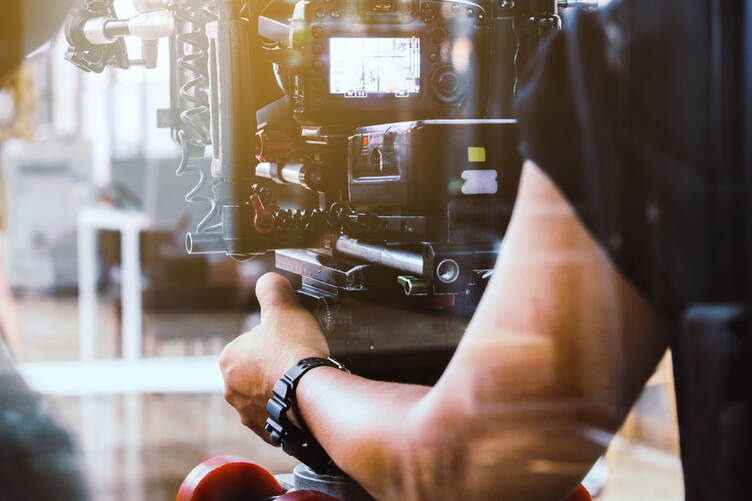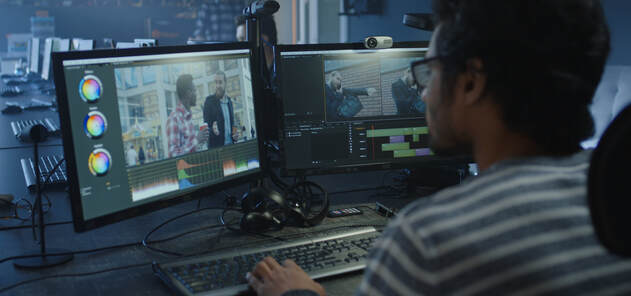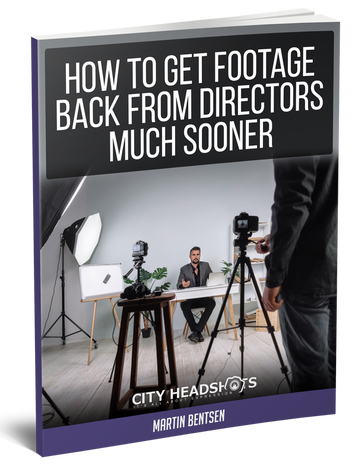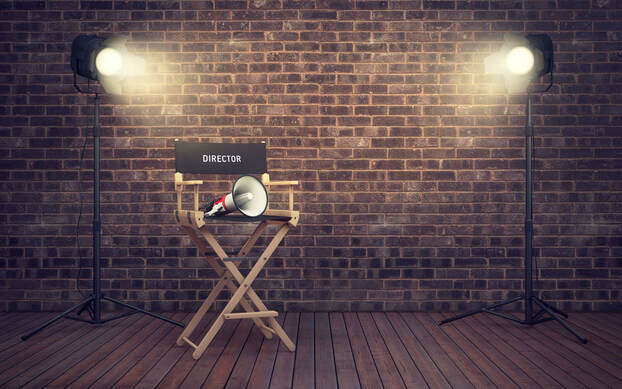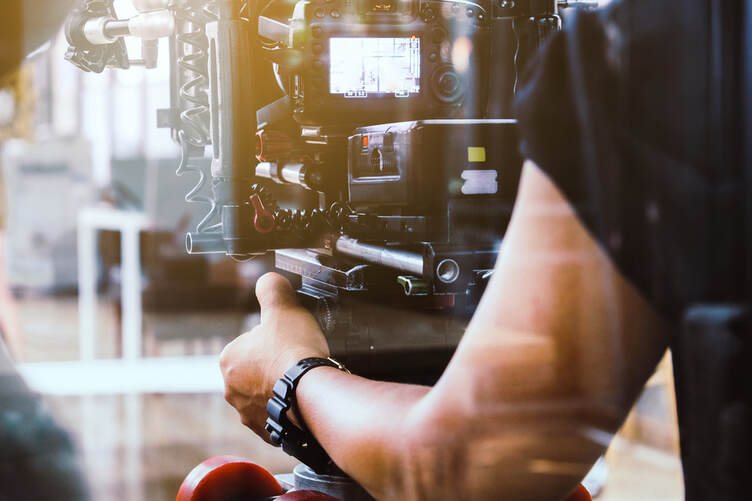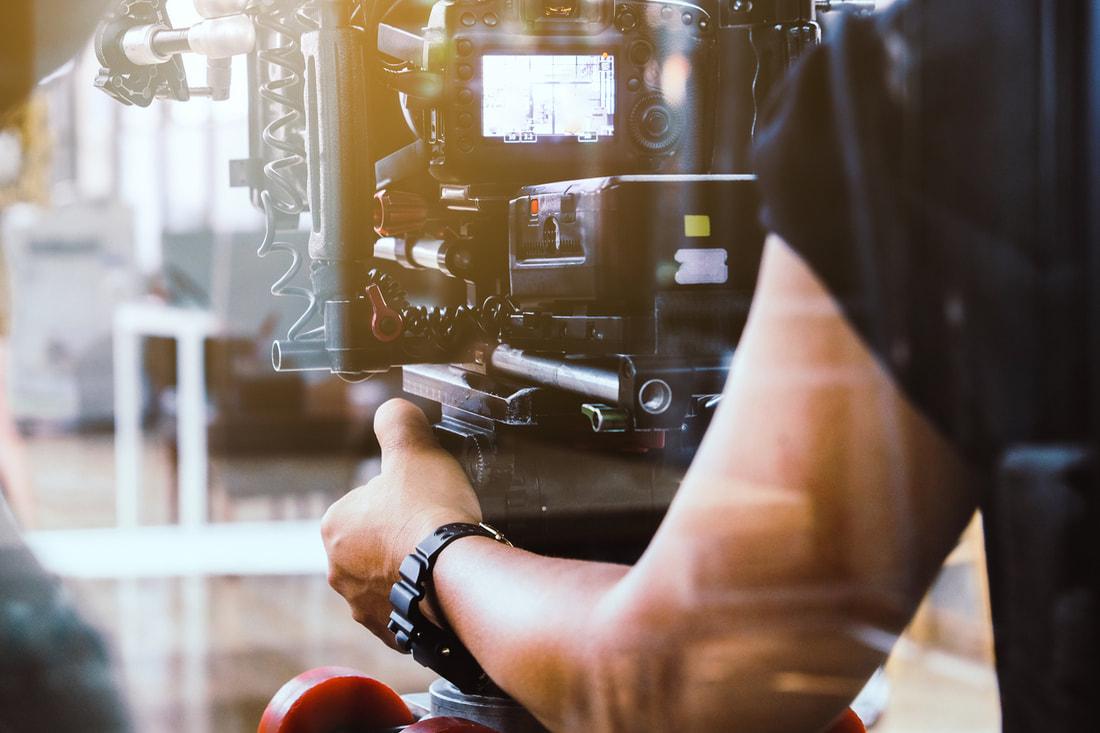|
Need reel editing or shooting services?
By the end of this article, you'll know:
No fluff in this guide, just real, actionable advice. Ready to get started? Related Guide: Access Netflix Auditions WITHOUT an Agent or Reel Demo ReelA demo reel is one of the three most critical marketing materials actors need, yet most only have the first two: Not having a reel costs many actors TONS of opportunities because most casting directors simply skip past actors with no footage out of habit.
|
|
- Strategy 2 of 4: Direct and shoot your own productions – This is a less common strategy that can cost a lot of money (and time). Creating your own film productions is great because you're in charge, you're going to learn a ton, and you're probably going to have lots of fun putting together the project and making new friends. If you hire a great DP (director of photography), you can walk away with some outstanding footage of yourself, and you'll have access to it immediately! The biggest downside of course, besides the fact that you'll need to learn how to write, direct, produce, and hire people, is that there is an enormous cost if you don't already have all the needed equipment. Even for a short film, you're likely to spend at least $3k altogether. You need to pay people, buy food, get permits and insurance, rent equipment, and much more.
A note on using footage from real auditions: Although technically this is OK, just be careful with it because if it's for a major production, you could get into trouble posting it online. It's usually better to use footage you record separately – not something connected with any particular audition.
- Strategy 3 of 4: Use self-tapes and recorded auditions (with your smartphone) – This is a very common strategy and takes almost no time or money! Using self-tape footage and recorded monologues is totally OK for a demo reel! That said, most casting directors prefer seeing you perform with someone else (like a reader) as a dialogue rather than a monologue – it's easier to judge your acting ability by seeing how you respond to lines from other performers. With this strategy, you'll get immediate access to your footage, it costs virtually nothing, and you don't need any expertise (unless you have no idea how to use an iPhone). Casting directors don't mind looking at these "self-tapes" because it gives them a good idea of your on-camera acting ability. The only downside is that if this is the only footage you have, it could tell casting directors that you have limited on-set experience, which might make them leery of bringing you in (especially for bigger projects).
A note on using footage from real auditions: Although technically this is OK, just be careful with it because if it's for a major production, you could get into trouble posting it online. It's usually better to use footage you record separately – not something connected with any particular audition.
Want a Pro Self-Tape Studio?
This Video Will Show You How to Build One (for *almost* free)
I've created an in-depth video tutorial to show you how to set up your own professional self-tape studio for *almost* free in your own home. You don't even need lighting or sound equipment!
Here's what you'll learn:
Here's what you'll learn:
|
- Strategy 4 of 4: Pay a production company to shoot scenes for your reel – This is becoming increasingly common and can help a TON, but it costs some money. You can shoot a highly-professional, customized scene specifically for your demo reel. Doing this lets casting directors see what you'll look like in professional projects, and gives them a sense of your acting ability. These days, it's very common for actors to shoot high-end footage for their reels to instantly jump ahead in their careers and sign with agents. If you want to shoot footage for your reel and you're based in the NYC/NJ area, check out Actor Screener Shoot. You'll get access to all your footage within 1-2 weeks of the shoot (fully edited, sound-mixed, and color-graded) and you'll be able to start sending it out to casting directors and agents immediately. Actor Screener Shoot also has an actor roster, where you can sign up to be a scene partner and work with other actors to get footage for free.
Creating Your Reel
Step 2: Gather & Import Your Footage
Once you've got your footage, it's time to edit it into a demo reel!
- Step one is to install video editing software onto your computer. There are plenty of free video editing apps out there like Window's Movie Maker, Apple's iMovie, and others (some that even work on your smartphone). Most editing software should be fine because you'll just need to do basic edits, nothing too fancy. Note that if you're not using software that comes pre-installed on your computer or phone, you should check to be sure the website you're downloading from is reputable so you don't accidentally install a virus!
- The next step is to download and convert your footage. You'll have to get all your footage converted into editable files. This means that if some of your clips are on the web on streaming sites like YouTube, Amazon Prime, Hulu, or others, you'll have to convert them or screen capture them. This is often where most actors get tripped up because the software out there to help with this is riddled with viruses and they often sell your info to marketers, so I recommend being very careful. If you don't want to deal with this, you should work with a professional reel editor who can take care of all of this for you. Software like Apple's Compressor will allow you to convert different file formats into .mov files that can be easily imported into editing software. If you don't properly convert your files, you'll wind up getting error messages when you try to open them in your video editor.
- Step three is to import your clips into your video editing platform. Once you've gathered your clips and converted them, you can easily load them into the video software and start editing! Most video applications will take a few minutes to copy all the footage in and get it prepared for editing.
Question: Can You Use Copyrighted Footage or Music in a Demo Reel?
Disclaimer: We are not lawyers – please consult a lawyer for legal advice.
Footage: All actors use copyrighted footage in their reels – 99% of the stuff you'll put in your reel is copyrighted! As long as you don't try to sell your footage or put a YouTube ad onto it so you can make money when people watch it, it's generally legal unless you signed an NDA or other document saying you wouldn't use it.
Music: If you're not selling or making money directly from your reel, it should be fine to use copyrighted music in it. Learn more about the legalities here. Keep in mind that if you're uploading your reel to YouTube, sometimes YouTube mutes the audio if there is music, so I usually recommend not including music in your reel unless it's already a part of the clip and can't be removed.
Creating Your Reel
Step 3: Time to Edit!
Now that all your footage is in the video editing software, it's time to start cutting it down. Here are some guidelines and tips to follow as you work on your reel edit:
Want help editing your reel?
If this sounds complex or you want an expert who has spent over 15 years editing reels for actors to help, I highly recommend checking out our Professional Reel Editing Services for Actors.
We'll sit down with you via Zoom, share our screen, and edit with you right then and there. It's a collaborative effort where we create a smooth reel that follows all industry guidelines, ensuring your reel is entertaining AND highlights your best possible moments for casting directors and agents.
Here is some of what we offer:
You can learn more about our reel editing services at Demo Reels for Actors. We work with clients all over the world through our virtual reel editing services done via Zoom.
- Length MUST be under 2:30 – Your reel should ideally be between 1-2 minutes at most, but can go as long as two minutes and thirty seconds if absolutely necessary. Ideally it should contain somewhere between 3 and 7 clips altogether, so you'll need to be ruthless as you edit to get it down to the proper length.
- Use your best stuff only – Remember that casting directors will generally judge you by your WORST clips, so be sure nothing on your reel makes you look bad.
- No fancy intros – Because of how busy they are, casting directors will never watch more than 5 seconds of your reel if you add a montage or something else at the beginning. They simply want to see your acting ability, and anything that takes away from that will cause them to move onto the next actor. So just start with your best scene!
- Include your contact Info – Add your name, headshot, phone number, and email address to the end of your reel. If you have an agent, you can include their info instead if you want, but that's up to you.
- It must be easy to see and hear you – Don't bother using footage that is too dark or has terrible sound quality if it can't be fixed during the editing process.
- Don’t start with an on-camera introduction or slate – Your reel should go straight into the action. Casting directors don't want to see you saying, "Hi, my name is BLANK and here's my reel."
- Lead with your most impressive credits – Most casting directors will only watch the first 30 seconds of your reel, so don't save the best for last. However, your first clip should ALWAYS show your acting ability, even if it's not your biggest and most impressive credit. Putting your single most impressive credit first at the expense of a better clip that shows your performance can make you appear desperate.
- Include text at the bottom of each clips naming the show or film – This primarily applies to anything noteworthy. If it was just a student film or unprofessional project, you don't need to include the title.
- Must have been shot within the past 2-5 years – Some actors try using footage from 20-30 years ago in their reel, and it just makes casting directors wonder where they've been all that time. You can include those credits on your resume, but casting directors want to see recent footage in your reel.
- It should clearly show your Types, while still showing range – If you play specific characters or Types, you should make sure to highlight them towards the beginning of your reel. This means if you often play cops, you should include a few clips of you playing cops. However, you should also show your emotional range by including a sad scene, an angry scene, etc.
- Edit out other actors so the focus is you – This is a trick that professional reel editors use. By editing out some of the other actors' lines while still keeping the reel smooth (basically, hiding the cuts underneath other footage), they can significantly shorten a scene to keep the focus on you while still ensuring the scene is smooth and easy to watch. This can make your role appear much bigger in a scene.
- MUST be smooth and not jumpy – a major mistake actors who edit their own reels make is that they try to cut out everything except their own lines. The problem is this makes it really hard to watch and judge your acting ability. Casting directors want the focus of the reel to be on you, but they still want to see and hear other actors in the scene so it's enjoyable to watch and easy to follow. They'll never be able to judge your acting ability if there are constant jump cuts and there is no smooth flow.
- Don’t present wildly different acting types next to each other – It can be a bit jarring to jump from an extremely dramatic, sad scene to a hilarious slapstick comedy. It's better to separate them with something less comedic or sad – something in-between. This makes the reel easier and smoother to watch.
- Keep scenes very quick and easy to watch – Each scene in your reel should be no more than 30-40 seconds if possible. If they're too long, they'll start to drag and make it easier for the casting director to turn your reel off.
- Don’t use overly dramatic scenes and acting – Make sure your performance is natural and your acting looks real. Thinking you need to use something where your acting is over the top and melodramatic is only going to hurt your reel.
- Your scenes don’t need context – Don't worry about trying to ensure the casting director knows what the story is. As long as they can see your acting ability and get a clear sense of your genuine performances, your reel will work. Cutting out backstory also saves you valuable screen time.
- Don't put production value before performance – When you're first starting out, it matters more for casting directors to be able to see your range. It's almost always better to use an emotionally charged scene shot on a flat wall than a single boring line with the greatest production value ever because casting directors need to see your acting ability.
Want help editing your reel?
If this sounds complex or you want an expert who has spent over 15 years editing reels for actors to help, I highly recommend checking out our Professional Reel Editing Services for Actors.
We'll sit down with you via Zoom, share our screen, and edit with you right then and there. It's a collaborative effort where we create a smooth reel that follows all industry guidelines, ensuring your reel is entertaining AND highlights your best possible moments for casting directors and agents.
Here is some of what we offer:
- Lighting-quick turnaround and straightforward pricing - Time is of the essence in this industry! That's why in our "Expert Guidance" package, you'll receive your final reel same-day. For other packages, the entire process typically takes less than a week (including any back-and-forths if you want changes). And there is no nickel-and-diming for those "after-the-fact" adjustments – our packages are all inclusive.
- Find and access hard-to-get footage - We use special software to pull clips from footage that is hard to get. Even if it's blocked from downloading, we can almost always access it and include it in your reel, as long as you're solely planning to use it for your reel (fair use). And we will let you know if there's something we can't access before you pay.
- Expand your range - If you consistently get called in for roles you don't enjoy, we can manipulate where and how certain scenes are used in your reel to actually get casting directors to see you as a different Type (thereby opening up new audition opportunities).
- Ensure your acting technique looks fantastic - As filmmakers, we have a keen eye for what looks great and what looks slightly off. We'll be 100% honest and tell you exactly what parts of your performance might be making your reel weaker (along with actually fixing it in the edit).
- Make YOU the focus of the scene - By cutting down on other actor's lines but still incorporating their reaction shots as you speak (so there are no jarring cuts), we can make your part look bigger in the scene, while keeping the length of your reel short and snappy.
- IMPROVE your footage so it looks and sounds better than it did before - If you're dealing with footage that was shot too dark or washed out, we can fix it by applying color correction and color grading. We can even reduce background sounds to make your voice easier to hear.
- We guarantee you'll LOVE your reel, or your money back - We hate cookie-cutter template reels, and although there are some general rules and guidelines for industry-standard reels, each edit session is customized to you and your unique brand. We guarantee you'll walk away with a truly outstanding and unique reel you're proud of, and if you're not happy (and there's nothing we can do to fix it), we'll refund you in full.
You can learn more about our reel editing services at Demo Reels for Actors. We work with clients all over the world through our virtual reel editing services done via Zoom.
Creating Your Reel
Step 4: Exporting, Uploading, and Sharing
Once you've created your reel, it's time to export and upload it so you can start using it to book acting jobs!
- Wait a day and watch it with fresh eyes. Before you finalize, export, and upload it online, I highly recommend waiting at least a day and watching it again with fresh eyes. You'll probably notice something you missed and want to make some final adjustments.
- Once you watch it and are fully happy, export it as a standalone video file. All video editing software will allow you an option to export your video as a single video file that can be played anywhere (though some free applications might require you to pay to remove their watermark). Export it as a .h264 or .mov file so you can easily upload it online.
- Share it with at least 1-2 friends to get some feedback. Once the video is exported and you have a playable file on your computer, upload it to a private video sharing link so you can send to a few people for feedback. This feedback is critical to making sure you didn't miss anything. Youtube is a good place to upload for this because it will generate a simple, unique URL link that you can keep as "unlisted" and then email it to your friends.
- Make any adjustments needed. When your friends send you their feedback, take it with a grain of salt. Feel free to discard anything they say that you disagree with before you make adjustments because sometimes too many opinions can be confusing and make your reel worse! But for anything you DO agree with, make sure to implement those final adjustments.
- Export the final file. Wait one more day, watch your final reel again with fresh eyes, and if you're happy with it, go ahead and export the final file.
- Upload it to YouTube and your favorite casting websites. For whatever casting platforms you use, go ahead and upload it. Sure, you might have to pay between $25 and $100 to upload your reel, but we promise it's worth it. You'll instantly move ahead of actors who don't have a reel, and casting directors will take your submissions much more seriously. Most actors who have reels get at least 5-10X the number of auditions each month compared to those who don't. You should also remember to upload your reel to your own website if you have one.
- If asked for a reel via email, share your links. Don't attach the reel file directly to the email because chances are it will be too big and you'll get an error message, or your email will wind up in the spam box because it has large attachments. Instead, just copy and paste your YouTube link or a public link to your favorite casting profile. Links to your reel are more likely to be clicked on than attachments.
Parting Advice
Over time, you'll continue to improve your reel by swapping out clips and making it stronger and stronger. Your reel will never be perfect, but your long term goal is to eventually have a full 2-minute reel that's got plenty of high-quality, professional footage with scenes from professional TV shows and films.
You'll know your reel is as strong as it can be when it's got the following three qualities:
- It's got at least 5-6 high-quality, professional scenes from well-known television shows or films.
- In at least two of those scenes, you're speaking directly to a well-known or famous actor.
- You're extremely proud and excited about everything in your reel.
Don't worry – it can take years to get there, and that's OK. But it's good to have an idea of what the perfect reel is so you know what to aim for over time.
Eventually, you'll even start to split your primary reel into separate reels – one for dramatic scenes, one for comedic scenes, one for commercials, etc. But don't worry about that when you're first starting out.
And if you want help creating your reel, we'd LOVE to work with you:
- Shoot Professional Footage for Your Reel – imagine, in just a few weeks from today you could have lots of high-quality footage showcasing you in the best possible light.
- Edit a Reel from Footage You Already Have – we've been editing reels for over 15 years and can take the pressure off you by accessing and converting your clips, using our experience to help you choose the best possible moments of footage, and editing it all down into a compelling reel that agents and casting directors take seriously.
3 Numbers All Actors Should Know
Knowing how to create a great demo reel is important, but it's just one small part of growing your acting career.
If your goal is to act full-time, you should know these 3 numbers:
If your numbers aren't there yet, that's OK! It's certainly not easy to audition and book that much.
But those are actual, real numbers from busy, working actors who didn't just get lucky.
Those busy, working actors started at the beginning – for them, the biggest question swirling in their minds at the time was:
How do I get taken seriously by casting directors when I don't have good credits or footage? And how do I get credits/footage without being taken seriously by casting directors?
It's the classic actor's catch 22.
When we're struggling to get our careers off the ground, our minds can slip into "desperation mode" and start looking for quick-fix solutions. We'll ask ourselves questions like:
But questions like those mean you're focused on Tactics, instead of Strategy.
Think about it this way: Would you bake a cake by randomly sliding a pile of flour, eggs, and chocolate into the oven? Of course not! How you combine the ingredients, the temperature you cook it at, and for how long are all just as important.
Similarly, the long-term, well thought-out strategy you follow as you grow your acting career matters. A LOT.
That's why "strategic thinking" is one of the greatest gifts you can give yourself as an actor.
So today I'd like to give you a gift: 3 tools specifically designed to help you start thinking and operating strategically.
These tools have helped over 14,000 actors so far, many of whom have gone on to:
My free Actor's Toolkit will help you BLAST through the actor's catch 22 so you start getting WAY more auditions and bookings every month:
If your goal is to act full-time, you should know these 3 numbers:
- 40-60 Submissions – This is how often full-time, working actors submit themselves (whether they have an agent or not) each month.
- 10-20 Auditions – This is how many times full-time working actors audition (or at least record and submit self-tapes) each month.
- 3-5 Bookings – This is how often full-time working actors book real, paid acting jobs each and every month.
If your numbers aren't there yet, that's OK! It's certainly not easy to audition and book that much.
But those are actual, real numbers from busy, working actors who didn't just get lucky.
Those busy, working actors started at the beginning – for them, the biggest question swirling in their minds at the time was:
How do I get taken seriously by casting directors when I don't have good credits or footage? And how do I get credits/footage without being taken seriously by casting directors?
It's the classic actor's catch 22.
When we're struggling to get our careers off the ground, our minds can slip into "desperation mode" and start looking for quick-fix solutions. We'll ask ourselves questions like:
- "Should I take another acting class?"
- "Do I need better headshots or should I pay to shoot a reel?"
- "What's the fastest way to get an agent?"
But questions like those mean you're focused on Tactics, instead of Strategy.
Think about it this way: Would you bake a cake by randomly sliding a pile of flour, eggs, and chocolate into the oven? Of course not! How you combine the ingredients, the temperature you cook it at, and for how long are all just as important.
Similarly, the long-term, well thought-out strategy you follow as you grow your acting career matters. A LOT.
That's why "strategic thinking" is one of the greatest gifts you can give yourself as an actor.
So today I'd like to give you a gift: 3 tools specifically designed to help you start thinking and operating strategically.
These tools have helped over 14,000 actors so far, many of whom have gone on to:
- Book Broadway roles
- Land network television and Netflix shows
- Sign with agents and managers
- And much more – faster than you'd expect (you can see some success stories here).
My free Actor's Toolkit will help you BLAST through the actor's catch 22 so you start getting WAY more auditions and bookings every month:
The Actor's Toolkit
|
|
Martin Bentsen (author of this guide) is an actor marketing coach who uses strategic thinking to help actors book more work. He’s helped over 14,000 actors with their careers and actor headshots since 2009 and his photography studio City Headshots is ranked #1 on Yelp. He’s spoken at NYU, The New England Theater Conference, The Actor’s Green Room, and other venues. Want to book more acting work by thinking strategically? Start with his free Actor’s Toolkit to create new opportunities right away, or visit his website at www.martinbentsen.com. |
Some Additional Q&A
Demo Reel or Showreel?
It can be confusing since half of people refer to the word "demo reel" and half of people refer to it as "showreel." But they both refer to the same thing.
On the other hand, there is sometimes a difference between the words "demo reel" and "sizzle reel." A demo reel used to be 3-4 minutes long, and contain about 5-6 scenes, each 30-45 seconds. These days however, actors use the shortened form which used to be referred to as a sizzle reel – about 5-6 scenes cut into something 1-2 minutes long.
Nowadays the word demo reel and sizzle reel both mostly refer to the same thing.
On the other hand, there is sometimes a difference between the words "demo reel" and "sizzle reel." A demo reel used to be 3-4 minutes long, and contain about 5-6 scenes, each 30-45 seconds. These days however, actors use the shortened form which used to be referred to as a sizzle reel – about 5-6 scenes cut into something 1-2 minutes long.
Nowadays the word demo reel and sizzle reel both mostly refer to the same thing.
Can I See Some More Demo Reel Examples?
Above you saw one example of a demo reel. Here's another example:
Do I Need Different Types of Demo Reels?
When you're first starting out, it makes sense to only have one reel because you won't have much footage.
You might combine together your comedic work, dramatic work, and even a clip or two from a commercial you've been in.
But eventually as you start to get more and more footage, you should separate your reels because casting directors prefer to ONLY see what they're casting for. The more specific you are with your reel, the more "right" for the part you'll look.
Demo reels can be tailored for commercial work, legit work (meaning comedy and dramatic TV shows and/or movies), voiceover, and even singing and stage work!
How you break your reels up is up to you, but the more specific yours is for the type of work you're seeking, the higher the chance you'll be called in for the audition.
Some casting directors actually prefer 30-second individual clips because so many actors submit such terrible reels. For that reason, it's recommended that when you're first starting out, you should ONLY use 20-30 second clips and you wait on creating a professional demo reel until you have at least 5-6 strong clips that feature you as the primary actor.
You might combine together your comedic work, dramatic work, and even a clip or two from a commercial you've been in.
But eventually as you start to get more and more footage, you should separate your reels because casting directors prefer to ONLY see what they're casting for. The more specific you are with your reel, the more "right" for the part you'll look.
Demo reels can be tailored for commercial work, legit work (meaning comedy and dramatic TV shows and/or movies), voiceover, and even singing and stage work!
How you break your reels up is up to you, but the more specific yours is for the type of work you're seeking, the higher the chance you'll be called in for the audition.
Some casting directors actually prefer 30-second individual clips because so many actors submit such terrible reels. For that reason, it's recommended that when you're first starting out, you should ONLY use 20-30 second clips and you wait on creating a professional demo reel until you have at least 5-6 strong clips that feature you as the primary actor.
Do You Need a Demo Reel to Get an Agent?
It depends on the agent. Most agents need to see some sort of footage showing your acting ability, and having a decent reel can make it significantly easier to get signed. Some agents only need short clips of you performing, but in an ideal world, those clips should look very professional.
The best way to get an agent is by sending in a compelling cover letter and ensuring your marketing materials are up to scratch. Download my free cover letter templates here – in some cases these cover letters can help you get an agent even if you have no reel!
The best way to get an agent is by sending in a compelling cover letter and ensuring your marketing materials are up to scratch. Download my free cover letter templates here – in some cases these cover letters can help you get an agent even if you have no reel!
Where to Go From Here
If you enjoyed this article, chances are you'll like these too:
Comments are closed.

